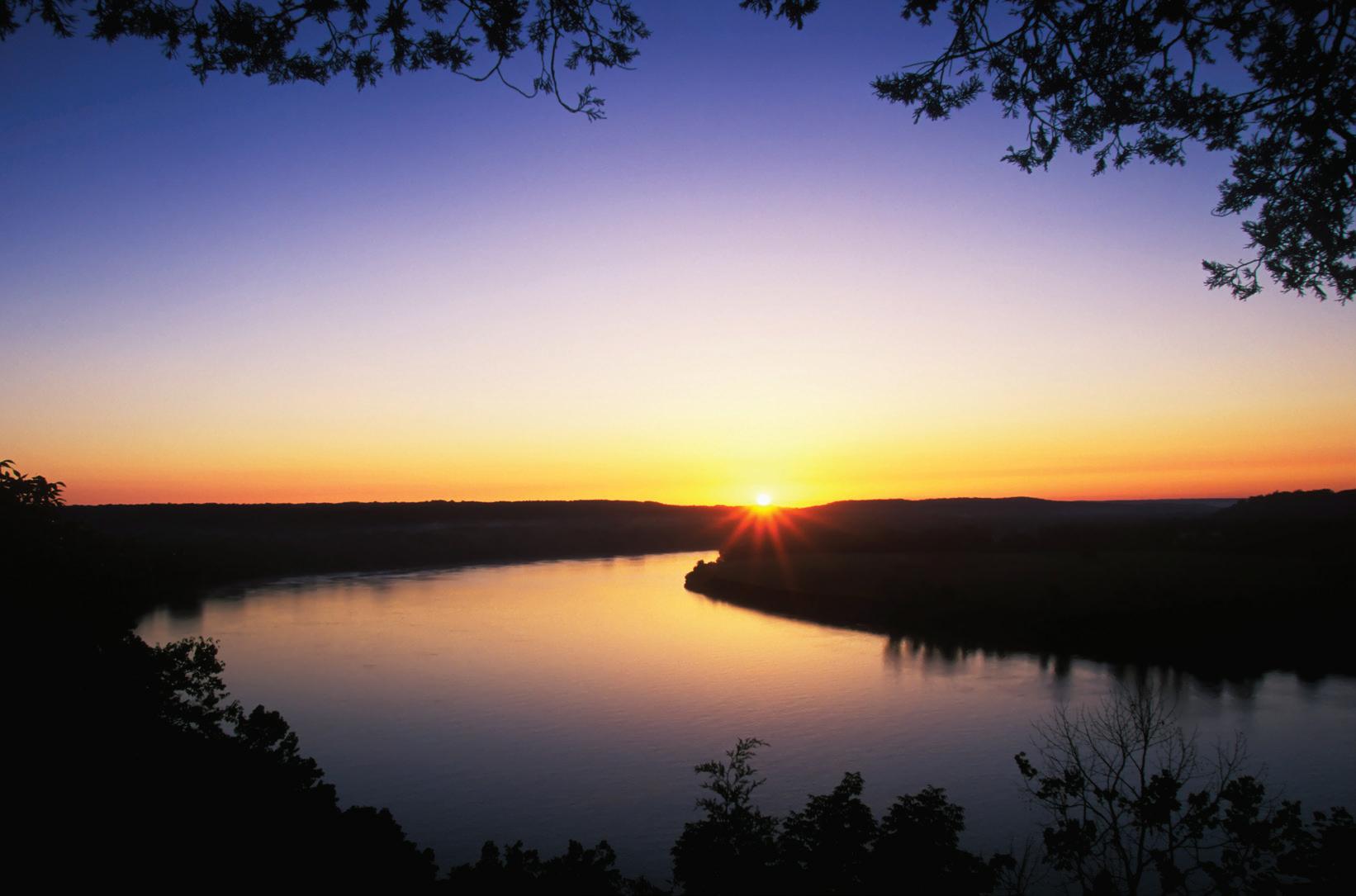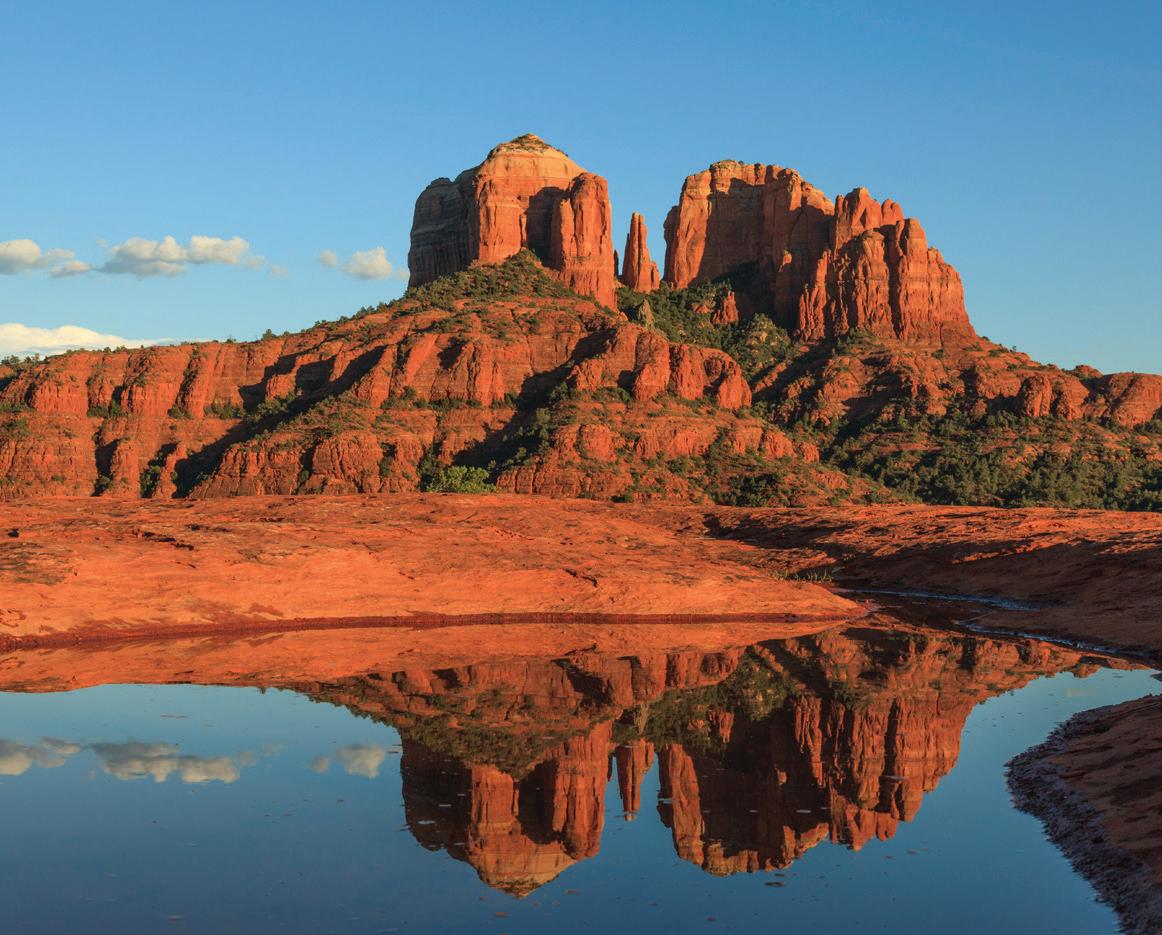
5 minute read
At Home on Earth | Kyle Kramer
Kyle Kramer
Kyle is the executive director of the Passionist Earth & Spirit Center, which offers interfaith educational programming in meditation, ecology, and social compassion.
Advertisement
He serves as a Catholic climate ambassador for the US Conference of Catholic Bishops-sponsored Catholic Climate Covenant and is the author of Making Room: Soul-Deep Satisfaction through Simple Living (Franciscan Media). He speaks across the country on issues of ecology and spirituality.
He and his family spent 15 years as organic farmers and homesteaders in Spencer County, Indiana.
Restoring the Great Conversation
EarthandSpiritCenter.org
WANT MORE? Visit our website: StAnthonyMessenger.org
—Father Thomas Berry, CP
In the beginning, goes the well-known opening to the Gospel of John, was the conversation (logos in Greek). This novel translation isn’t so novel at all: It connects to a rich Greek philosophical tradition in which the concept of logos was used to indicate that the very fabric of reality was dynamic and relational— conversational, if you will. We were made to talk not only with our fellow humans, but also with the rivers, the wind, and the stars—and through all this, with the creator.
Unfortunately, as Father Thomas Berry lamented, this great conversation has largely been cut off. We talk to each other on Zoom and social media and on our cell phones and even in person, but we have far fewer conversations with the rest of the living world. In many ways, we’ve even forgotten how.
Over the past few years, I’ve tried to be more intentional about having conversations with the more-than-human world and have found that it’s really challenging. To state the obvious, trees and rivers, wind and stars don’t speak English—or Spanish, or any other human language, including the languages of economics and politics. We have to encounter them on different terms than our own.
Falling out of the great conversation has consequences. At a soul-deep level, it hurts to be cut off from the rest of God’s creation. And it’s not good for creation either. That’s the point Pope Francis has made repeatedly: that our spiritual, physical, communal, and environmental health are all tied together in a single, integral ecology.
THE CHURCH’S ROLE
Many people and organizations are working to restore the great conversation between us and the rest of the living world. Here is my question: How can the institutional Church play a meaningful role in this effort? How can our religion “re-ligament” or reconnect us to what is most real? And what could be more real than the presence of God, dwelling in the sacrament of the living world?
But before we look to the Church to offer wisdom in these efforts, we have to acknowledge that the Church has been part of the problem too. The Church has a long history of cozying up to political and economic power, even blessing the missionaries and colonizers as they enslaved and killed the indigenous peoples who were immersed within the great conversation with creation. Our Church may have helpful teachings about care for creation, but they often don’t filter down to the level of parishes or even dioceses. Even the very

We can encounter God and nurture our spirituality in natural settings, such as the aptly named Cathedral Rock in Sedona, Arizona. walk on the “edge of the inside” of the Christian tradition, as Richard Rohr puts it, and even those who walk just outside the tradition, as well.
I’m glad to say we have precedents for this. We have the early forms of desert monasticism, in which small groups of people lived radical lives of simplicity and contemplation, deeply connected to the wild places where they dwelled. We have St. Francis and his ragtag followers, living close to the land and in constant conversation with Brother Sun and Sister Moon. Who’s to say that similar movements can’t arise again? In fact, they are.
If we’re going to restore the great conversation with creation, it will mean plenty of conversations with leaders in our own Catholic tradition about how our worship and spirituality can connect more deeply with the more-than-human world. Isn’t that a wild idea?
architecture of our churches has generally helped to disconnect us from the outside world, implying that the holy is to be found “in here” rather than “out there.”
As in any crisis time, the Church faces both great risk and great opportunity in this moment. The risk is that the Church becomes irrelevant, unable to respond to the signs of our troubled times. The opportunity is that it finds creative ways to help people reconnect with the living world.
In liturgical, sacramental traditions like ours, there are plenty of ways to invite deeper engagement with the living world, such as through homilies, prayers of the faithful, and eucharistic prayers that focus on creation. But honestly, our current liturgies and liturgical spaces can only do so much. We also need new, additional forms and places of worship.
What if, alongside weekly Mass, we formed small groups that met for quiet, nature-based contemplation and ritual celebration—outside, in all weather, in natural spaces? We need a “Church of the Wild,” as my colleague Victoria Loorz describes in her lovely new book by the same name: a Church deeply formed and shaped by contact with and care for the more-than-human world.
HELPFUL
TIPS WORSHIPPING WITH CREATION

1Learn more about nature-centered worship experiences within the Christian tradition and find out if there is a “wild church” gathering near you at WildChurchNetwork.com.
ACTIVE RESPONSIBILITY
There’s a rub here, though, and it goes both ways. On one hand, if “wild worship” is to take hold, it’s always going to be very specific to the gathering place and the people who gather. And so the institutional Church is going to have to let go of its need for centralized control, trusting laypeople to develop and lead independent, creative forms of worship that are faithful both to place and to the Christian tradition. And on the other hand, we who would participate in such gatherings can’t just be passive observers on autopilot, in a worship service planned and performed by others (as, I hate to admit, I have often been at weekly Mass). We will need to take active responsibility and leadership roles as we preside over the Church of the Wild.
It’s going to take edge-walkers to create such forms of wild worship. These are people who are willing and able to
2Victoria Loorz’s excellent book on this subject is Church of the Wild: How Nature Invites Us into the Sacred.
3If you are inclined to create a “wild church” worship experience, consider the following structure: • gathering ritual with silent meditation, • a land acknowledgment, • sacred readings, • time for individual encounters with nature, • time to reflect on and share those experiences, • a ritual common meal, and • a benediction and blessing.










